I’ve been thinking about this image lately. I first saw it around five years ago when Sirlin Games was getting their approachable fighting game Fantasy Strike off the ground. Fighting games have a reputation that trends towards difficulty and Sirlin Games identified this huge space to play in that moved away from the difficult games that dominate the Fighting Game Community.

At the time, there were few fighting games that aimed to be truly approachable. Various fighting games had dabbled in single button special move inputs (Fate/unlimited Codes) or easy input modes that allowed for automatic combos (Marvel vs Capcom 3, Persona 4 Arena), but rarely were these the driving design force behind a game. Rather, these options were supplemental and often limited access to some of the more nuanced and interesting mechanics these games had on offer.
Divekick was one of the earliest and most notable examples of an approachable fighting game swinging wildly to one end of the spectrum with a game that was approachable to many player types. It still showcased the essence of what makes fighting games great: technical skill, depth of game knowledge, and the ability to play off of and against one’s opponent. Divekick didn’t need combos, the ability to walk, or anything beyond two buttons to be a shining example of a fighting game.
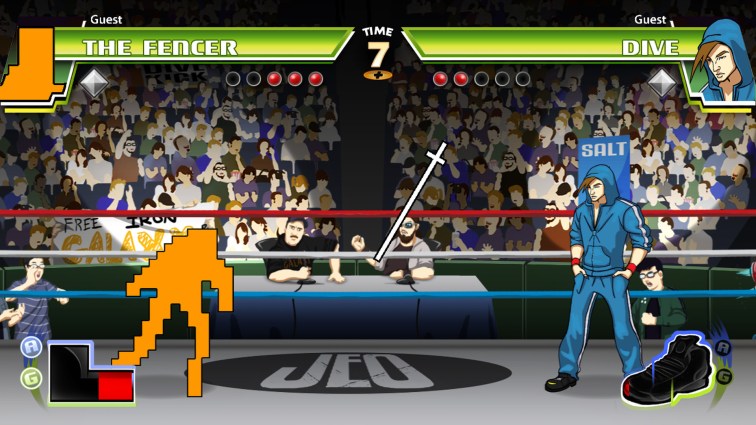
Fantasy Strike attempts something similar, but aims to be closer to the other fighting games clustered at the complex end of the spectrum. Compared to Divekick we have combos, throws, and we can even walk! But there’s no crouching. In addition, some elements featured in more complex fighting games have been stripped away to allow the core features to shine.
By distilling down fighting game mechanics to their core both of these games end up exploring some really interesting design spaces. How does a lack of crouching impact how fighting games are played? How many risks would you take if you died in one hit? What options would you use if they were available at the press of a single button? What if you knew exactly how long until your opponent’s super attack was available? How would all of this influence your decision making?
Since the early days of Divekick and Fantasy Strike we’ve seen more experiments in approachable fighting games. So, let’s dive into two games, at different spots on the complexity spectrum, to see what design spaces these developers are exploring and examine what implications these choices have for their games.
Fantasy Strike
I’ll start with Fantasy Strike not only because I’m very familiar with it, but because it’s an early example of the approachable fighting game trend that attempted many different options to address complexity. Those same options led Sirlin Games to new design spaces and some of these choices have resonated with other developers.
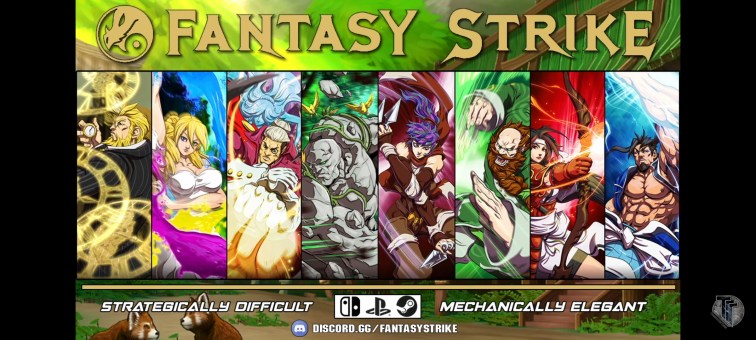
The tagline for Fantasy Strike is, “Strategically difficult. Mechanically elegant”, but how do we get there? In this case, through a combination of distillation and clarity.
Sirlin Games identified the psychological aspect of player interactions as their ideal and stripped away systems that obfuscated the interplay between competitors. In service of this, a large input buffer was added allowing for easier combo execution. This rewards players for their ability to choose the correct move instead of for their ability to perform it.
The developers also aim to provide clarity of information. Character archetypes are displayed at the character select screen, so players have a rough idea of each fighter’s gameplan prior to selecting them. Frame advantage is displayed dynamically in-game using unique hit sparks, so players know when and where their openings exist in real-time. All of these elements serve the goal of an approachable fighting game. They embrace the core of the genre while reducing complexity to allow newcomers to explore these games.

However, none of this really opens up new design spaces. That is until we get to the health bar.
Health bars in fighting games are notorious liars. We’ve coined the term magic pixel for lifebars that refuse to deplete despite appearing empty. In Fantasy Strike a segmented lifebar is used. It’s very clear how close someone is to a KO. The new design space comes into play when it intersects with another mechanic: chip damage. It’s a system that allows players to deal small amounts of damage to defenders even though they’re successfully blocking. Fighting games can have health values in the hundreds or thousands. Fantasy Strike ranges from five to eight. If you allow the chip to take a full life segment it could be a devastatingly powerful tool, so instead chip damage works in stages. Only a subset of attacks can cause chip damage and landing a hit causes a pip to flash slowly after one hit, then faster after a second, finally breaking on the third hit.

This, by itself, is a fairly interesting interaction, but these choices ripple further still. Instead of allowing the attacker to have a persistent advantage, there’s a cooldown on the flashing stage of chip damage. After a brief period of not taking damage the flashing stops indicating that the chip damage cycle has been reset. This cooldown won’t occur if the defender is still in blockstun however, so the attacker can use non-chip attacks to maintain the duration of the flashing chip. This offers both players agency in the interaction and further enriches the design space.
All of this stems from a single design choice: clearly display key information for the players. This single approachability goal has vast implications and pushes the game into a far more interesting design space that you don’t always see explored.
Tough Love Arena
Now let’s examine what developers learned in the intervening years since Divekick and Fantasy Strike came onto the scene. Tough Love Arena was released as a public beta on January 1st 2021. Designed by M. Paul Weeks and Amy Xu, Tough Love Arena is a new take on approachable fighting games. Much like Sirlin Games before them, they’ve made smart design decisions to lower the barrier of entry for new players while retaining the core of the genre.
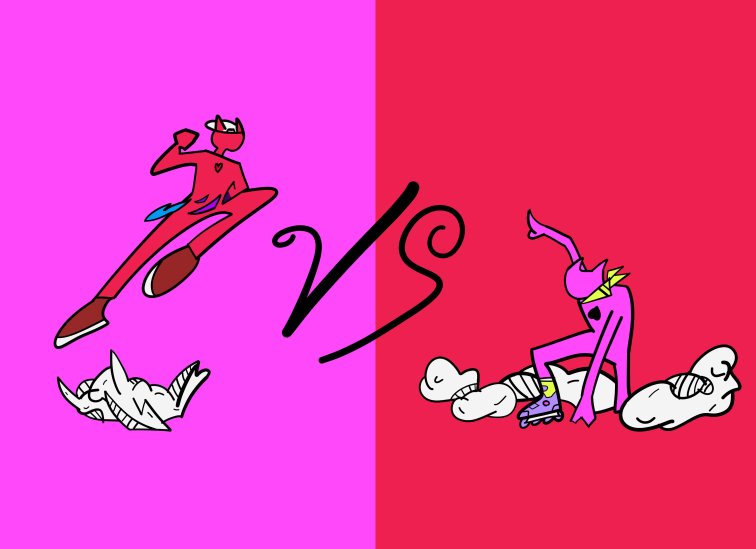
Fantasy Strike lowered the barrier with clear and concise presentation while adhering to traditional fighting game archetypes. By comparison, Tough Love Arena takes some more liberties when it comes to archetypes, but offers portability of knowledge between characters. Here we have three character categories: protein, allium and carbs. Each group features two variants like protein’s Beef and Pork which share a common moveset, but have their own style and unique special moves. This allows for players to easily transition to new characters without a significant increase in the amount of information required to play effectively. This is particularly important considering the huge number of fighting games available, each requiring significant amounts of specialized knowledge. Limiting the volume of knowledge required, while still allowing for unique playstyles, is a worthwhile approachability goal and is well served here.
Furthermore, Tough Love Arena has a simplified control scheme embracing the modern alternative of removing motion based specials, instead of a traditional simple mode with single button combos. Move types are also universal such as back specials being defensive, while forward specials are always jumping attacks. This helps to keep everything simple and approachable for new players.

Much like Fantasy Strike, crouching was also removed from Tough Love Arena to further limit the move count. In fact, the team seems to have taken some cues from Fantasy Strike with Weeks noting he appreciates what Sirlin Games is doing in regards to fighting game design during a Tough Love Arena developer stream. The removal of crouching was specifically mentioned as an area of interest. One of the implications of that removal, that Weeks isn’t a fan of, is that you have to give up ground to defend since blocking requires holding back. According to Weeks:
“We wanted to get rid of crouch and high/lows, but keep the utility of crouch block as a way to defend without retreating.”
In order to accomplish this Though Love Arena allows you to block by holding back or by being in a neutral position (having no buttons pressed). Weeks had this to say on neutral blocking:
“We just tried it, and it worked, so I can’t say I was directly inspired. I know other games do it though. MK [Mortal Kombat] blocking is neutral + button, and the GCN [Nintendo GameCube] Naruto games have neutral block (but only when facing the opponent)”
Once again, through the process of distillation two different teams stripped away the same mechanic, but chose to explore the implications of that decision with different sensibilities leaving us with two unique approaches to this mechanic.
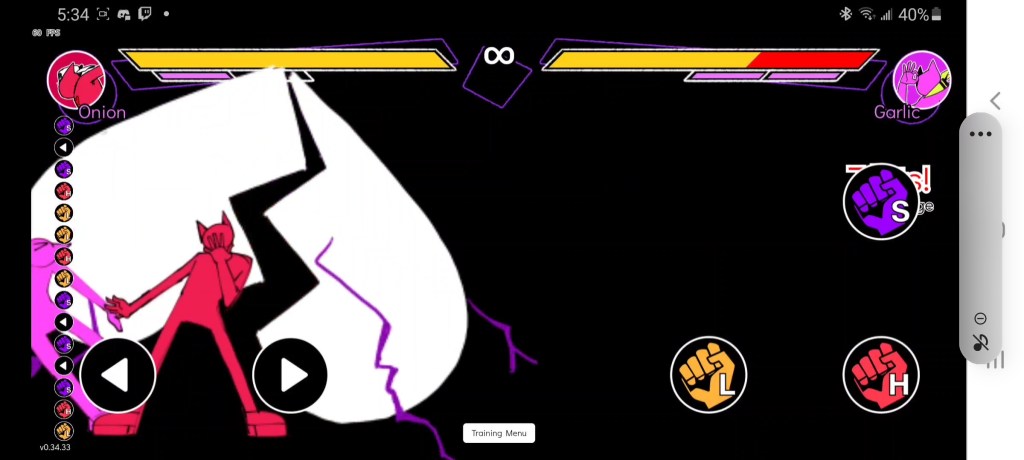
So let’s explore what else Tough Love Arena does in its design. We have seen Weeks take a cue from Fantasy Strike with the removal of crouching, then take a divergent path with the design specifics. He then takes this a step further with the removal of a dedicated jump. The jumping special attacks mentioned earlier is in fact your only method of jumping. This serves a similar purpose to the removal of crouching: it’s another tool to facilitate getting players to the core of the game. It also limits what Weeks calls button real estate.
“Fewer buttons are important for beginners learning the game (less options to categorize and memorize) and for mobile accessibility (limited screen space w/o covering gameplay)”
“These restrictions then force you to be very intentional with every move, and design moves that can cover multiple use-cases so characters still have tools for common scenarios (eg Beef punch move works at spacing OR anti-air. Onion trip works as meaty OR combo filler)”
It’s another method of design distillation that ripples through Tough Love Arena. Tying jumps to an attack increases the risk level for players because your aerial options are limited and more telegraphed. You have to commit to an attack and therefore a recovery period where you are vulnerable upon landing. What results is a heightened risk/reward scenario. These design decisions offer a more approachable game that oozes FGC and, once again, explores a unique design paradigm.
Conclusion
I once heard some wise words from Maj who is a notable fighting game community member, combo video creator, and author of The Footsies Handbook an oft cited guide to strategic fundamentals in fighting games.

“…when it comes to fighting game design, it’s all still either theory or preference.”
I think it’s worth taking to heart. If we are too dogmatic about what we value in our fighting games they will stagnate. We’ve seen this with countless games sharing systems that are only slightly differentiated. The theories and preferences of a handful of developers are seen as objective solutions to design questions. What we have built and what we value is fantastic, don’t mistake me, but there’s so much more to explore. We need new developers to set out and find what is important to them in this genre and shine a light on it. The new, the strange, and the daring are all valuable.
As we’ve seen in Fantasy Strike and Tough Love Arena a desire for approachability has led to some magnificent fighting games. They each value and explore different aspects of the genre. Some of these aspects will require players to develop new skills, but designers can aid in the process by offering portability of knowledge. In addition, they can distill systems down to only the essentials allowing players to focus on their new skills when playing in these spaces. The core drive to open the genre up to new players has led us directly down a path to unique design spaces that are rewarding for all competitively minded fighting game players.
At least that’s my theory.
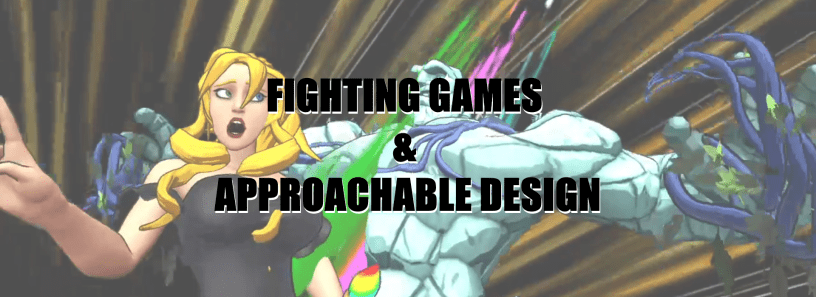
“At least that’s my theory.”
Your GAME THEORY. Thanks for posting!
(I have nothing meaningful to say, so it’s just a dumb joke from me^^)
LikeLiked by 2 people
Reblogged this on DDOCentral.
LikeLiked by 1 person